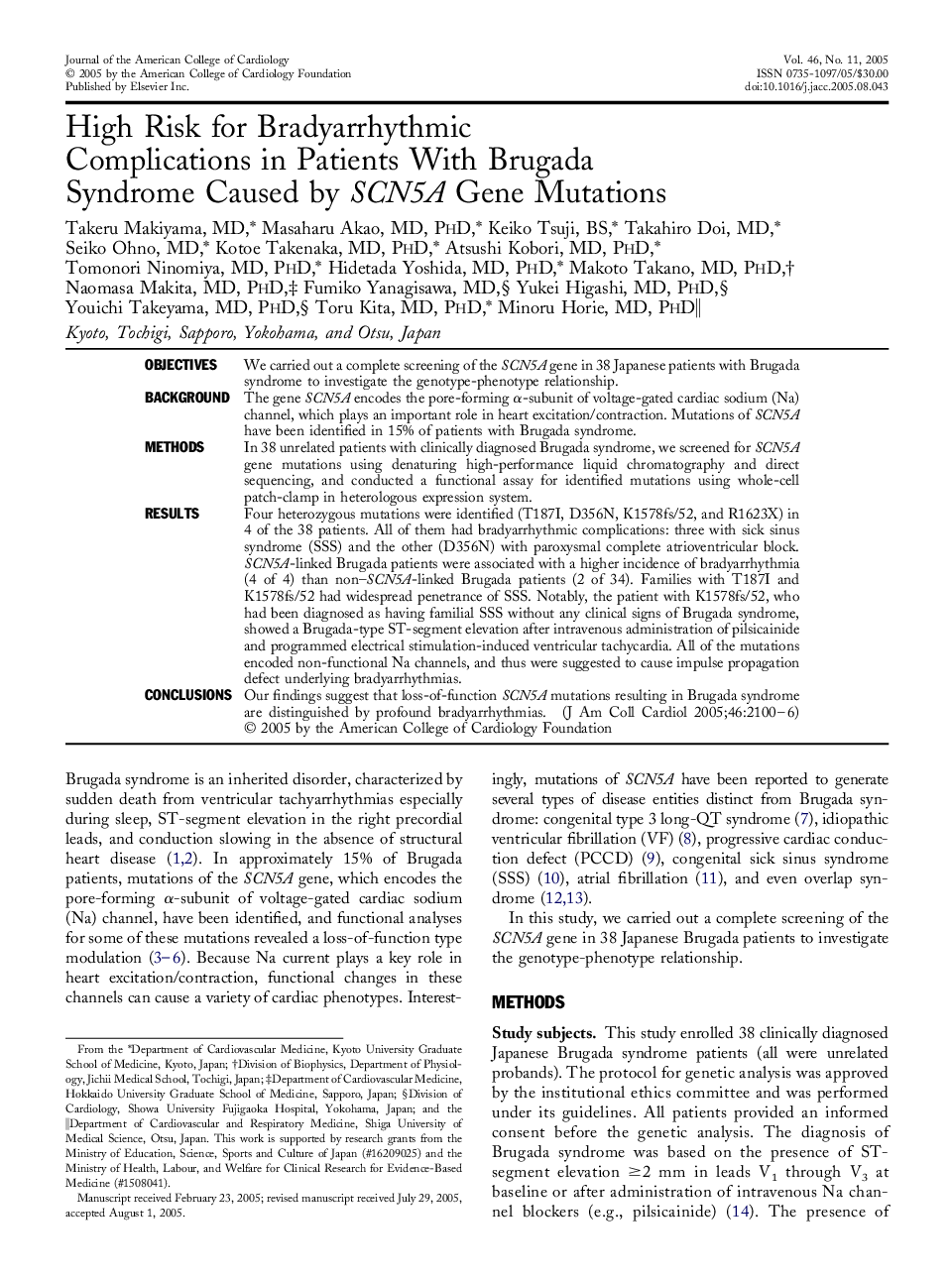| کد مقاله | کد نشریه | سال انتشار | مقاله انگلیسی | نسخه تمام متن |
|---|---|---|---|---|
| 2954387 | 1577527 | 2005 | 7 صفحه PDF | دانلود رایگان |

ObjectivesWe carried out a complete screening of the SCN5Agene in 38 Japanese patients with Brugada syndrome to investigate the genotype-phenotype relationship.BackgroundThe gene SCN5Aencodes the pore-forming α-subunit of voltage-gated cardiac sodium (Na) channel, which plays an important role in heart excitation/contraction. Mutations of SCN5Ahave been identified in 15% of patients with Brugada syndrome.MethodsIn 38 unrelated patients with clinically diagnosed Brugada syndrome, we screened for SCN5Agene mutations using denaturing high-performance liquid chromatography and direct sequencing, and conducted a functional assay for identified mutations using whole-cell patch-clamp in heterologous expression system.ResultsFour heterozygous mutations were identified (T187I, D356N, K1578fs/52, and R1623X) in 4 of the 38 patients. All of them had bradyarrhythmic complications: three with sick sinus syndrome (SSS) and the other (D356N) with paroxysmal complete atrioventricular block. SCN5A-linked Brugada patients were associated with a higher incidence of bradyarrhythmia (4 of 4) than non–SCN5A-linked Brugada patients (2 of 34). Families with T187I and K1578fs/52 had widespread penetrance of SSS. Notably, the patient with K1578fs/52, who had been diagnosed as having familial SSS without any clinical signs of Brugada syndrome, showed a Brugada-type ST-segment elevation after intravenous administration of pilsicainide and programmed electrical stimulation-induced ventricular tachycardia. All of the mutations encoded non-functional Na channels, and thus were suggested to cause impulse propagation defect underlying bradyarrhythmias.ConclusionsOur findings suggest that loss-of-function SCN5Amutations resulting in Brugada syndrome are distinguished by profound bradyarrhythmias.
Journal: Journal of the American College of Cardiology - Volume 46, Issue 11, 6 December 2005, Pages 2100–2106